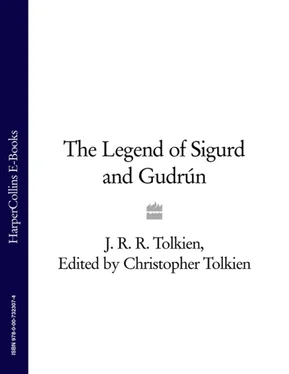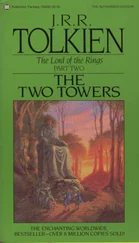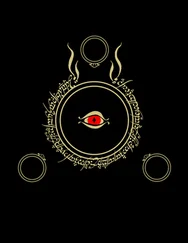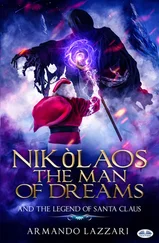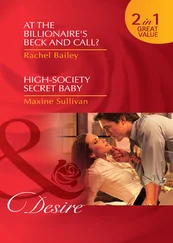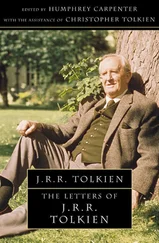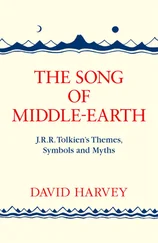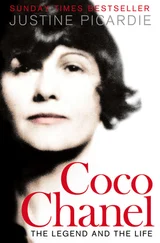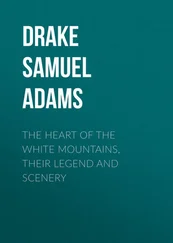J. Tolkien - The Legend of Sigurd and Gudrún
Здесь есть возможность читать онлайн «J. Tolkien - The Legend of Sigurd and Gudrún» — ознакомительный отрывок электронной книги совершенно бесплатно, а после прочтения отрывка купить полную версию. В некоторых случаях можно слушать аудио, скачать через торрент в формате fb2 и присутствует краткое содержание. Жанр: Старинная литература, на английском языке. Описание произведения, (предисловие) а так же отзывы посетителей доступны на портале библиотеки ЛибКат.
- Название:The Legend of Sigurd and Gudrún
- Автор:
- Жанр:
- Год:неизвестен
- ISBN:нет данных
- Рейтинг книги:5 / 5. Голосов: 1
-
Избранное:Добавить в избранное
- Отзывы:
-
Ваша оценка:
- 100
- 1
- 2
- 3
- 4
- 5
The Legend of Sigurd and Gudrún: краткое содержание, описание и аннотация
Предлагаем к чтению аннотацию, описание, краткое содержание или предисловие (зависит от того, что написал сам автор книги «The Legend of Sigurd and Gudrún»). Если вы не нашли необходимую информацию о книге — напишите в комментариях, мы постараемся отыскать её.
The Legend of Sigurd and Gudrún — читать онлайн ознакомительный отрывок
Ниже представлен текст книги, разбитый по страницам. Система сохранения места последней прочитанной страницы, позволяет с удобством читать онлайн бесплатно книгу «The Legend of Sigurd and Gudrún», без необходимости каждый раз заново искать на чём Вы остановились. Поставьте закладку, и сможете в любой момент перейти на страницу, на которой закончили чтение.
Интервал:
Закладка:
We now know, at any rate, that this collection of poems should not be called Edda at all. This is a perpetuation of an act of baptism on the part of the bishop in which he acted ultra vires. The collection had no comprehensive title at all so far as we know or the manuscript shows. Edda is the title of one of the works of Snorri Sturluson (died 1241), a work founded on these very poems, and others now lost like them, and it is the title of that work only, by rights; a work which is concerned primarily, even in the earlier parts which are cast in narrative or dialogue form, with the technicalities of Northern poetry, which for us it rescued from oblivion. The name is therefore quite inapplicable to a collection of actual antique poems, collected largely for their merits as verse, not as exemplars of a craft.
Beyond this we can say little about the manuscript. It appears that the Codex Regius belongs palaeographically to say about 1270 (early in the latter half of the thirteenth century), and is itself apparently a copy of an original belonging to 1200 (some say earlier). It belongs in fact actually as we have it to a period thirty years after the death of Snorri; but even if it were not a fact that Snorri used these very poems substantially as we have them, it is clear enough internally that the matter, the manner, and the language of the poems entitles them to the name ‘Elder’.
As for when they were written, we have no information other than an examination of the poems themselves will yield. Naturally the datings differ, especially in the case of individual poems. None of them, in point of original composition, are likely to be much older than 900 A.D. As a kind of central period which cannot possibly be extended in either direction we can say 850–1050 A.D. These limits cannot be stretched – least of all backwards. Nothing of them can have been cast into the form we know (or rather into the forms of which our manuscript offers us often a corrupt descendant), except for occasional lines, allusions, or phrases, before 800. Doubtless they were afterwards corrupted orally and scribally – and even altered: I mean that in addition to mere corruption producing either nonsense, or at least ill-scanning lines, there were actual variants current. But in the main these things were the products of individual authors, who, whatever they used of old tradition, even older poems, wrote new things which had not before existed.
The antiquity and origin of the mythology and legends met in the poems is another matter. In general it is not really so important to criticism (however attractive to curiosity) to know what answers can be made to this sort of question, as it is to remember that wherever they got their material the authors lived in the last centuries of heathenism in Norway and Iceland, and treated their material in the style and spirit of those lands and times. Even formal etymology has seldom much to say, attractive though I personally find it. Even when, as often happens, we can equate a name with its form in other Germanic languages it does not tell us much. Thus Jörmunrekkr is Ermanaríks , and his name an echo of the history of the Goths, their power and ruin [see pp.322–23, note to stanza 86]; Gunnarr is Gundahari, and his story an echo of events in Germany in the fifth century [see Appendix A, pp.337–39]. But this does not tell us much of the state in which these tales first reached the North, or the paths (certainly various) they came by. And still less does it help us to unravel the literary problems concerning the various treatment of the Burgundian theme in Scandinavia.
But intriguing as all this questioning is, we may end on the note we struck before: it is not of the first importance. Far more important than the names of the figures, or the origins of the details of the story (except where this helps us to understand what is unintelligible or to rescue a text from corruption) is the atmosphere, colouring, style. These are products only in a very small degree of the origin of the themes: they chiefly reflect the age and country in which the poems were composed. And we shall not be far wrong in taking the mountains and fjords of Norway, and the life of small communities in that disconnected land, as the physical and social background of these poems – a life of a special sort of agriculture, combined with adventurous sea-faring and fishery. And the time: days of the fading of a special, individual, pagan culture, not elaborate materially, but in many ways highly civilized, a culture which had possessed not only (in some degree) an organized religion, but a store of partly organized and systematized legends and poetry. Days of a fading of belief, when in a sudden changing of the world the South went up in flames, and its plunder enriched the wooden halls of the Norse chieftains till they shone with gold. Then came Harald Fairhair, and a great kingship, and a court, and the colonization of Iceland (as an incident in a vast series of adventures), and the ruinous wars of Ólaf Tryggvason, and the dying down of the flame, into the gentle smoulder of the Middle Ages, taxes and trade-regulations, and the jog-trot of pigs and herrings.
It may be that it was with that characteristic flourish that my father ended this lecture; at any rate (though the manuscript text continues, and soon turns to a consideration of individual poems) it seems a good place to end it here.
I append here a number of notes and brief statements on various topics that are best treated separately, as follows.
§1 The ‘Prose Edda’ of Snorri Sturluson
§2 The Saga of the Völsungs ( Völsunga Saga )
§3 The text of the poems
§4 The spelling of Norse names
§5 The verse-form of the poems
§6 Notes on the poems by the author
§1 THE ‘PROSE EDDA’ OF SNORRI STURLUSON
The name Edda properly belongs only to a celebrated work by the Icelander Snorri Sturluson (1179–1241). This is a treatise on the distinctive art of Icelandic poetry which in Snorri’s day was dying out: the old metrical rules disregarded, the old mythological knowledge essential to it attacked by a clergy hostile to any survival of heathendom. This book, in its three parts, is a retelling in prose narrative of ancient myths and legends; an account of, and explanation of, the strange diction of the old ‘court poetry’; and exemplification of its verse-forms.
In my father’s lecture (p.29) he noted that the application of the name Edda by Bishop Brynjólf of Skálaholt to the poems of the great Codex that he acquired in 1643 was without historical justification. In Brynjólf’s time it had come to be supposed among Icelanders interested in the ancient literature that there must have been ‘an older Edda ’ from which Snorri’s work was derived. Brynjólf himself wrote in a letter in 1641, before he knew of the existence of the Codex: ‘Where now are those huge treasuries of all human knowledge written by Sæmund the Wise, and above all that most noble Edda, of which we possess now, beyond the name, scarcely a thousandth part; and that indeed which we do possess would have been utterly lost, had not the epitome of Snorri Sturluson left to us rather the shadow and footprints than the true body of that ancient Edda.’
Sæmund the Wise (1056–1133) was a priest whose prodigious learning became a legend, but for the title Sæmundar Edda that Brynjólf gave to the Codex there was no foundation. Thus arose the conception of the two Eddas , the Poetic or Elder Edda and the Prose or Younger Edda. Why Snorri’s work was named Edda is not known, but there have been several explanations: by some it is related to the word óðr in the sense ‘poem, poetry’, as if it meant ‘Poetics’, by others derived from the place Oddi in south-west Iceland, a centre of Icelandic learning where Snorri grew up.
Читать дальшеИнтервал:
Закладка:
Похожие книги на «The Legend of Sigurd and Gudrún»
Представляем Вашему вниманию похожие книги на «The Legend of Sigurd and Gudrún» списком для выбора. Мы отобрали схожую по названию и смыслу литературу в надежде предоставить читателям больше вариантов отыскать новые, интересные, ещё непрочитанные произведения.
Обсуждение, отзывы о книге «The Legend of Sigurd and Gudrún» и просто собственные мнения читателей. Оставьте ваши комментарии, напишите, что Вы думаете о произведении, его смысле или главных героях. Укажите что конкретно понравилось, а что нет, и почему Вы так считаете.
